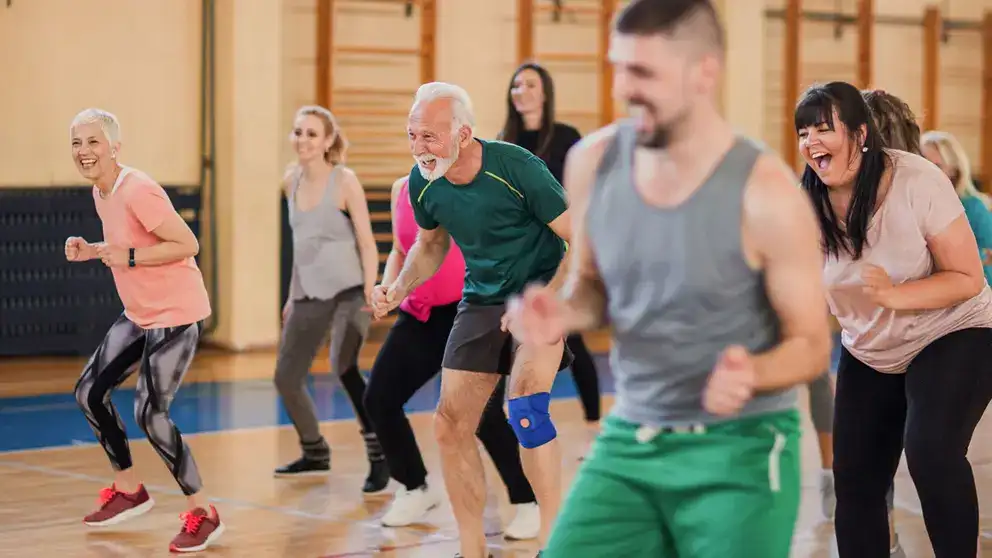It’s easy to fall into the trap: A friend gives you an activity tip, and then you pass it on. A week later, you hear the same tip repeated, so you figure it must be true. When you’re unsure, the important thing is to ask a qualified fitness professional for advice. In the meantime, knowing the difference between fact and fiction will keep you healthy, injury-free, and on track to meeting your physical activity goals. Regular physical activity, done right, is an important way to reduce your risk of heart disease and stroke. Here are eight myths that need some challenging:
Myth #1: An aerobic workout will boost your calorie burn for hours after you stop working out.
False: Don’t confuse calorie burn with metabolism. While your metabolism will continue to rev at a slightly higher rate after you finish an aerobic workout, the amount of calorie burn is not statistically significant. While there’s a little bit more of a metabolic boost after strength training, it’s still negligible. In other words, working out doesn’t mean you should eat more.
Myth #2: If you’re not working up a sweat, you’re not exercising hard enough.
False: Sweating or perspiring is not necessarily an indicator of exertion. Perspiring is your body’s way of cooling itself. It’s possible to burn a significant number of calories without breaking a sweat.
Myth #3: Machines are a safer way to weight train because you’re doing it right every time.
False: Although it may seem as if an exercise machine automatically puts your body in the right position and helps you do all the movements correctly, that’s only true if the machine is properly adjusted for your weight and height. Before using any equipment or performing any exercise, you should ensure you understand the full mechanics of the movement and the proper endpoints. Unless you have a coach or a trainer to figure out what is the right setting for you, you can make just as many mistakes in form and function and have just as high a risk of injury on a machine as if you work out with free weights or do any other type of workout.
Myth #4: When it comes to physical activity, you’ve got to feel some pain if you’re going to gain any benefits.
False: A fitness activity should not hurt while you are doing it, and if it does, then either you are doing it incorrectly, or you already have an injury. As for “working through the pain,” experts advise against it. If it hurts, stop, rest, and see if the pain goes away. If it doesn’t go away, or if it begins again or increases after you start an activity, see a doctor.
Myth #5: If you can’t be active often enough, you might as well not even do it.
False: Any activity is better than no activity, even if it’s only a 15-minute walk. Being physically active is important for heart health and is proven to reduce stress. So, even if you can’t make it to the gym or yoga class, you can always do something active each day. Taking a walk, climbing the stairs instead of hopping on the elevator or escalator all count!
Myth #6: You can take weight off of specific body parts by doing exercises that target those areas.
False: This concept is called “spot training” and unfortunately, it doesn’t target fatty areas. When you lose weight, your body predetermines which fat stores it will use. For example, doing sit-ups will strengthen your abs but will not take the fat off of your stomach. Similarly, an activity like running burns fat all over your body, not just your legs. You can, however, complement a balanced physical activity program with a selection of weight training exercises to gradually lose weight and tone your body.
Myth #7: You will burn more fat if you exercise longer at a lower intensity.
False: The most important factor in physical activity and weight control is not the percentage of fat calories burned, but the total calories burned during the activity. The faster you walk, bike or swim, for example, the more calories you use per minute. You may still be burning more calories (and likely will be) from fat but the relative percentage of the source will be altered.
Myth #8: The best time to be active is early in the morning.
False: There is no one optimal time to be active. The best time is the time that appeals to you and fits into your schedule on a regular basis. Some folks love to jump-start their day with a morning workout, while others swear that physical activity at the end of the work day is a great way to boost energy for the evening and eliminate stress. Choose whatever works for you.
Before starting any activity program, be sure to talk to your doctor or other healthcare professional.
This column was written by a certified personal trainer and fitness instructor and reviewed by a specialist in kinesiology.
Related information
5 healthy recipes to fuel your workout
Research finds ways to help you love exercise
